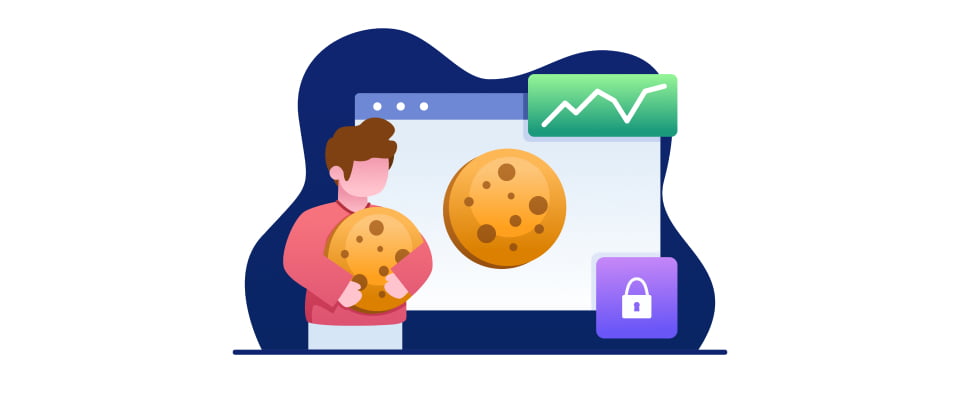Zero Party Data instead of 3rd Party Cookies
March 27th, 2024 by Heather MaloneyA Necessary Switch as Google Disables 3rd Party Cookies
Google’s commitment to disable 3rd party cookies in its Chrome browser by the end of 2024 (about 3 years later than other browsers) will mark the final death knell for audience targeting in pay-per-click advertising that use the data gathered by those cookies.
In this blog post we take a pragmatic view of the upcoming change, and assert that it won’t have much affect at all, for a variety of reasons but particularly if you change your approach to more fully embrace zero party (i.e. direct from customer) data.
Google’s change to improve user privacy is such big news primarily because ~65% of all browsing across the world is performed using the Google Chrome browser according to current statistics. Therefore, it follows that a change in Chrome will have a huge impact.
However, if you are worried about privacy of your personal data, it’s important to realise that Google is not the only company facilitating the profiling of customers through online means. Profiling of customers by collating disparate actions and signals is being performed by many large corporations. This is done to provide a more personalised user experience, and achieve higher sales at a lower cost, and more efficiently, by talking to the right customers at the right time. The big global technology companies are under a lot of pressure to do something about handling privacy better, and that’s why Google is finally taking action. As you will read later in this blog, there are arguably worse actions than allowing 3rd party cookies.

What is a 3rd party cookie?
A cookie is a small piece of information that a website puts on a user’s computer to help the website operate well e.g. to remember where you were last viewing.
A 3rd party cookie is a cookie placed on the website visitor’s computer after being generated by another website (the 3rd party). Website visits are tracked and sent back to the 3rd party who created the cookie. It allows the 3rd party to track the visitor’s overall online behaviours, interests, frequently visited websites, etc. With this detailed data, the 3rd party can build robust visitor profiles that can be used to retarget past visitors and drive them back to your website.
A 3rd party cookie might be found on a desktop computer, tablet, mobile phone.
3rd party cookies are generally owned by advertising platforms and social networks to track users across different websites and digital information platforms (e.g. digital TV, world-wide-web, social media platforms etc). Advertising platforms and social media sites rely heavily on profiling to decide which content to show users, including ads. In addition, such rich user profiles can be sold to other companies.
3rd party cookies may sound relatively harmless (who cares what websites you have visited and which ads you clicked on) until you start to see the implications play out in the real world.
How Will My Advertising be Impacted?
It could be argued that if you are relying heavily on pay-per-click advertising in platforms that are dependent on user profiling to deliver high conversions, that your digital marketing campaigns will be much less successful when Google switches off 3rd party cookies.
However, Google is working on alternatives to ensure that their PPC advertising platform still gives great results to advertisers after 3rd party cookies are disabled.
I expect that the impact on your business will be negligible if you are already:
- Primarily placing online ads in relation to search terms, and rely less heavily on profiling, such as interest groups of searchers. Geographical targeting will still function, even without profiling.
- Utilising contextual ads, that is, placing your ads within web pages containing content related to your ad. This can be configured for Display Ads in a Google Ads campaign. Such ad placements may be considered more favourably by website visitors because the ad relates to the content they are currently looking at, rather than a unrelated ad (i.e. an ad targeted at a profiled interest which may feel like you are being spied on).
- Utilising Google’s new Customer Match Lists, which involve uploading the data you have collated about your customers or leads into the Google Ads platform for the purpose of re-marketing. In addition, Google will use this for showing your ads to lookalike audiences. As an aside, many small businesses will not use the Customer Match List feature because of:
- The possible privacy implications – a business uploading customer data into Google is required to make this clear in their privacy policy.
- Lack of customer data – you need at least 1,000 records before you can upload a Customer Match List into Google, or
- Being in a category where Google prohibits the use of Customer Match Lists e.g. health industry.
- Investing in SEO. Your search engine ranks have nothing to do with 3rd party cookies.
- Utilising significant “owned” digital assets e.g., email / SMS database of your leads and customers, which you enrich with knowledge about your customer to allow you to segment and target your messaging. This is also referred to as Zero Party data. We’ll discuss this more below, but if you are looking for a platform for bulk email and SMS marketing, we recommend Enudge which will also help you to enrich your data based on contact interaction with your information.
Alternative 3rd Party Profiling
The fact that Google is disabling 3rd party cookies will have little to no impact on the following practices:
- An online digital industry exists that allows companies to buy data from a data broker to enrich your owned customer data, allowing you to know more about your customers. Many Australians are unaware that some large Australian companies share their data with other corporations, via “clean rooms,” so that they can enrich their own data. This is down to the level of email address, physical address, phone number, name etc. For more information you might like to read this eye-opening article: “Thought your doctor’s visit was private? Australian data brokers have your data, and they’re not afraid to use it.”
- Digital TV, where the signed in user is served ads applicable to their demographics, obtains profiling information from many sources, including apps on your mobile device. Minimal impact is expected as a result of Google turning off 3rd party cookies.
In addition, Google is taking so long to turn off 3rd party cookies precisely because they need more time to find alternate ways to achieve the benefits they are presently delivering to online advertising through deeper profiling.
It is expected that these alternatives will be less accurate in predicting which users to show which ads, but Google has claimed that the alternatives will be 95% as accurate as the current tools. The description of Customer Match List functionality above is an example of an alternative.
Another example of an alternative is called “Federated Learning of Cohorts (FLoC)” which targets a general cohort rather than individuals. This is a replacement for interest groups.
Even so, digital marketers are concerned that lower accuracy for ad targeting will equate to higher advertising costs. If that actually plays out, then it will be vitally important for businesses to employ more marketing using “owned assets” and the techniques described above. The earlier you start enriching your owned assets, the better.
Zero Party Data
Growing or enriching your owned assets does not need to involve clandestine enrichment through other corporation’s data via clean rooms. Over the last few years, in response to privacy concerns and new privacy legislation, there has been a rise in businesses requesting additional information directly from their customers, so that the business can provide more personalised offers and interaction. Customers have been very positive about this approach.
Using sweep stakes style competitions to directly request information from your customers, with the guarantee that the data will not be sold on to anyone and will be kept securely, is a practical example.
A HBR article reported about one example of this strategy: “Those campaigns achieved open rates above 50% and click-to-buy rates nearing 20%, representing increases of 250% and 33% respectively compared to their prior cookies-based campaigns. They also used this data to define more than 50 incredibly granular audience segments for their ad campaigns, which resulted in engagement rates that were on average 5.7 times higher than campaigns using Google and Facebook’s interest-targeting tools (tools which primarily leverage data from cookies).” (Source: “Say Goodbye to Cookies” HBR)
At Contactpoint we have always encouraged our clients to directly source and securely store rich data to support their customer relationships through the use of Custom Technology. If you would like to improve your customer engagement for the future, please don’t hesitate to get in touch.







